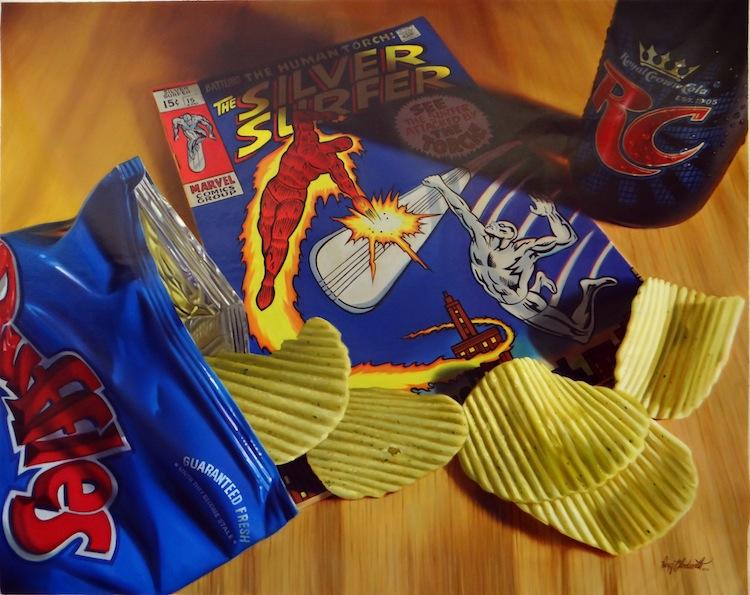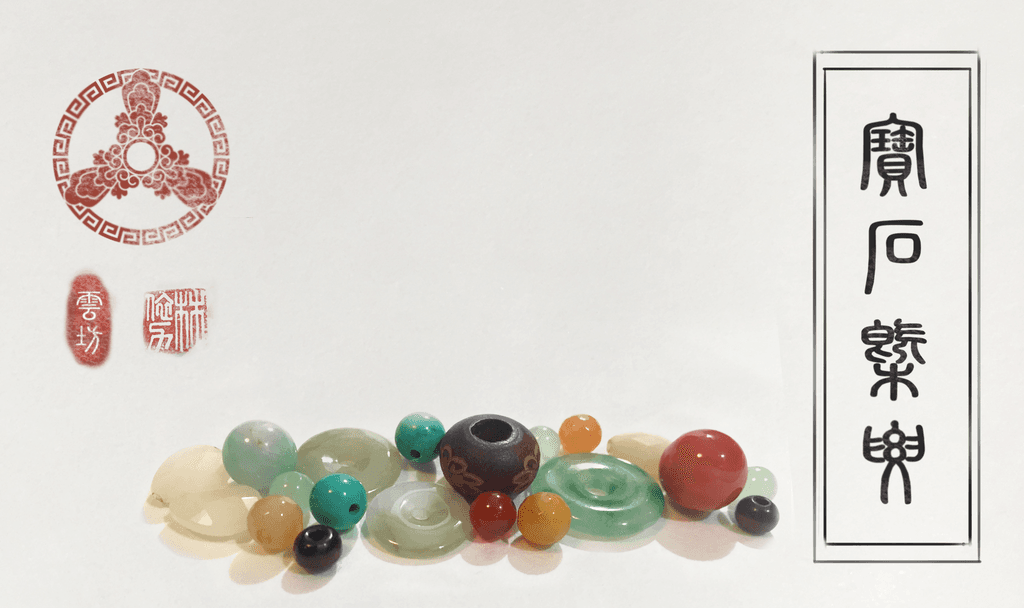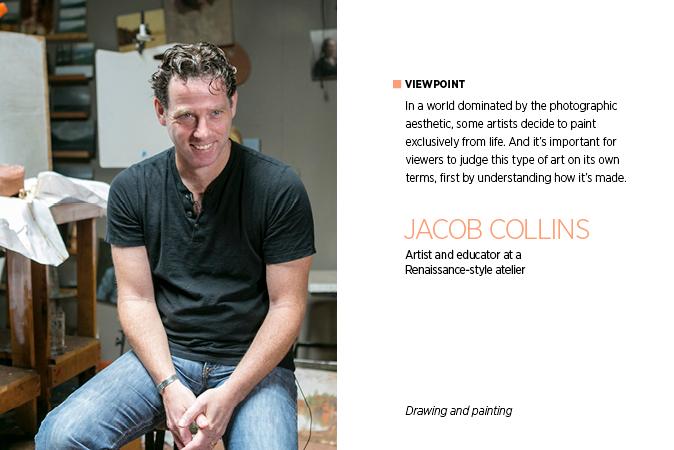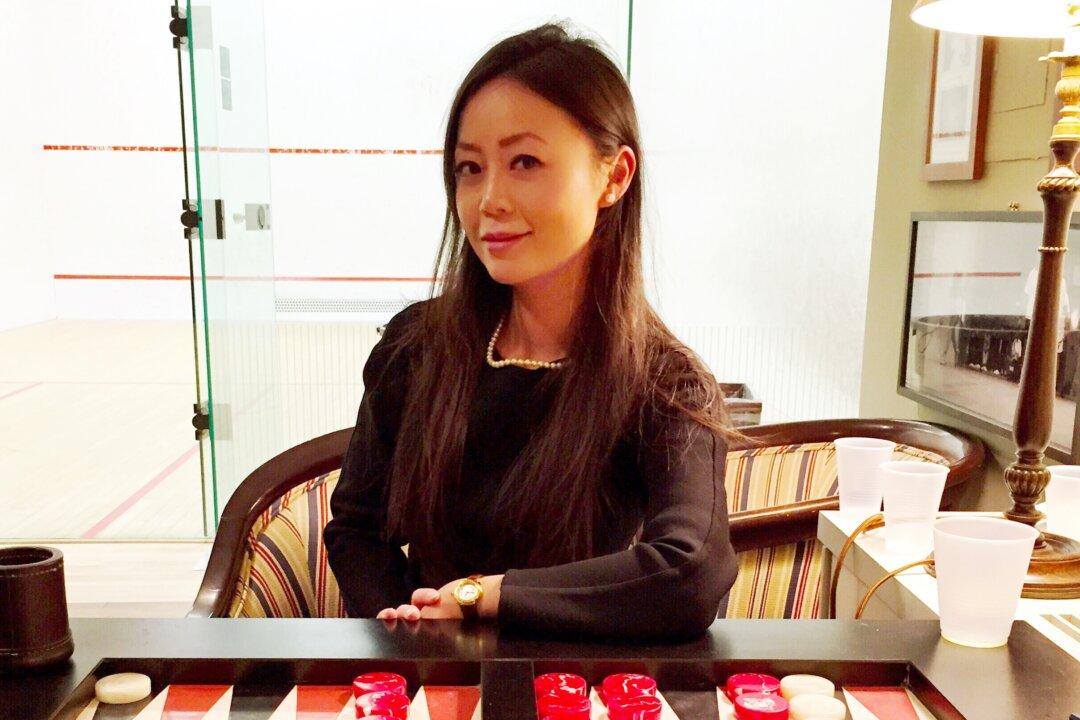This is part 5 of a 10-part series. To see the full series, see At the Confluence
The increasing prevalence of photography has fundamentally changed the way representational art is created and perceived in the modern day. At the Confluence examines how some of today’s artists have responded to the shift.
When people first lay eyes on a piece by Doug Bloodworth, they remark what a beautiful photo it is. Then they start pointing out familiar items from the curated chaos of sundry Americana: the Sunday funnies, a Marvel comic, a game of Monopoly, a toy cowboy gun. There’s no shortage of food—half-eaten pastries, M&M’s, devil’s food cake—anything Paula Deen would be proud of.
Then, upon closer observation, they realize it’s not a photo but an oil painting.
“They’re amazed that it was done from scratch on a blank canvas,” said David Muller, president of photorealism.com. Muller represents Bloodworth and several other photorealist painters and sculptors.








